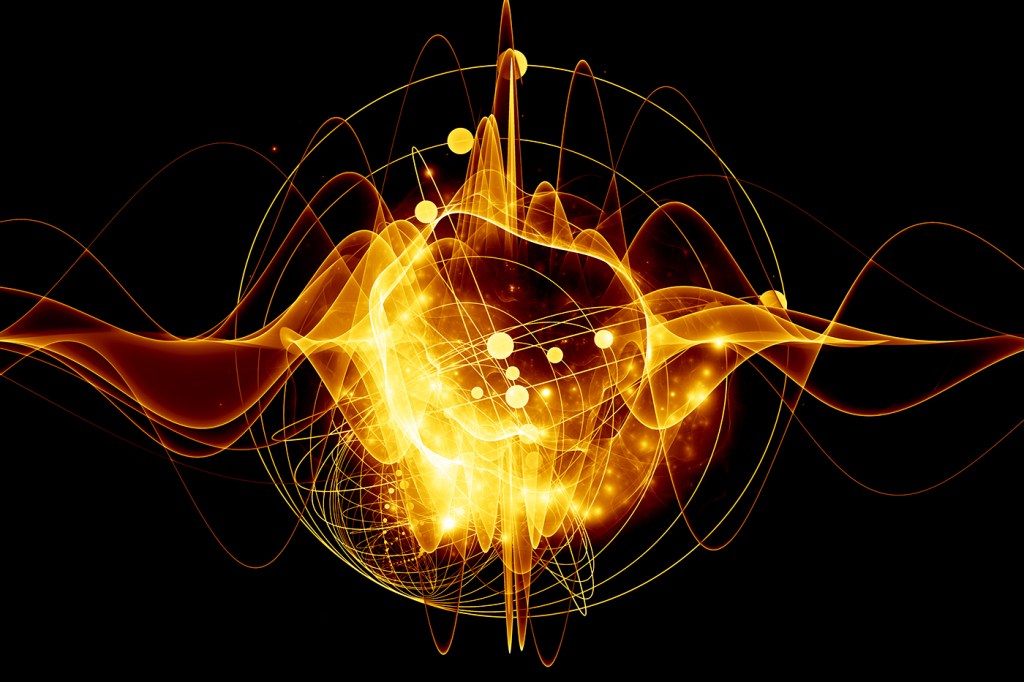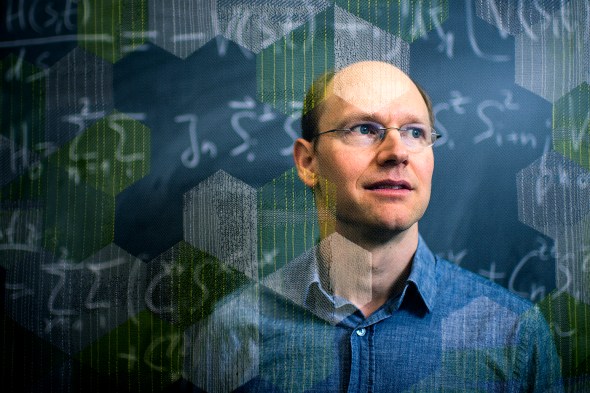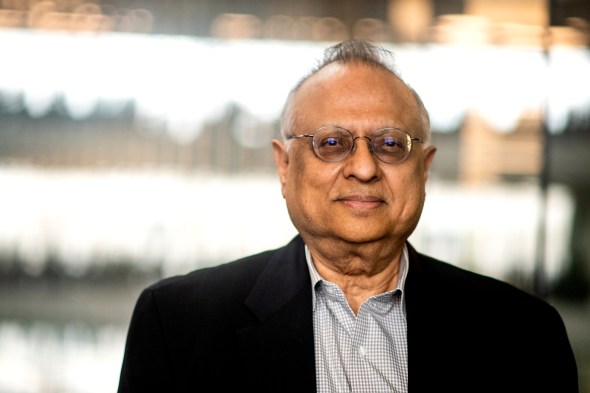Researchers discover new ‘unexpected’ phenomenon in quantum physics of materials

Researchers at Northeastern have discovered a new quantum phenomenon in a specific class of materials, called antiferromagnetic insulators, that could yield new ways of powering “spintronic” and other technological devices of the future.
The discovery illuminates “how heat flows in a magnetic insulator, [and] how [researchers] can detect that heat flow,” says Gregory Fiete, a physics professor

Gregory Fiete, a professor of physics at Northeastern. Photo by Matthew Modoono/Northeastern University
at Northeastern and co-author of the research. The novel effects, published in Nature Physics this week and demonstrated experimentally, were observed by combining lanthanum ferrite (LaFeO3) with a layer of platinum or tungsten.
“That layered coupling is what is responsible for the phenomenon,” says Arun Bansil, university distinguished professor in the Department of Physics at Northeastern, who also took part in the study.
The discovery may have numerous potential applications, such as improving heat sensors, waste-heat recycling, and other thermoelectric technologies, Bansil says. This phenomenon could even lead to development of a new power source for these—and other—budding technologies. Northeastern graduate student Matt Matzelle and Bernardo Barbiellini, a computational and theoretical physicist at the Lappeenranta University of Technology, who is currently visiting Northeastern, participated in the research.
Illustrating the teams’ findings requires considerable magnification (literally) to observe the world of atomic-scale particles—specifically, at the nano-lives of electrons. It also requires an understanding of several properties of electrons—that they possess something called “spin,” have a charge, and can, when moving through a material, generate heat flow.
Electron spin, or angular momentum, describes a fundamental property of electrons defined in one of two potential states: Up or down. There are many different ways these “up or down” spins of the electrons (also thought of as north-south poles) orient themselves in space, which in turn gives rise to different types of magnetisms. It all depends, Bansil says, on the ways atoms are patterned in a given material.
In a magnetic system, typically the spins in that material have aligned themselves in the same direction. That electron arrangement in magnetic (or “ferromagnetic”) crystals is what produces that force that attracts or repels other crystals. Lots of magnetic materials also conduct electricity when electrons are able to flow through them. Those materials are called conductors, since they are able to conduct electricity.

Arun Bansil, University Distinguished Professor of physics. Photo by Matthew Modoono/Northeastern University
In addition to generating an electric current, the movement of electrons through a material also carries a heat current. When an external electromagnetic field is applied to materials that conduct electricity, a heat current results.
“Heat is just when these electrons are jiggling around faster or slower, so, as a result, they can carry more or less thermal energy,” Bansil says.
Usually the spin current flows in the same direction of the heat current, Bansil says. But, in the specific materials used in this study, “it flows perpendicular to the direction of the heat current.”
“That is what is new here,” Bansil says.
It’s this “unexpected” interaction that opens the door to new ways of thinking about power generation.
“What we want to do is create a current of magnetism that generates electrical power, and the way you do that is by generating a voltage,” Fiete says.
To do that, researchers combined the antiferromagnetic insulating material (here LaFeO3) with another heavier element, such as platinum or tungsten, which are conductors. The coupling throws the electrons slightly off-kilter.
“This particular material has the spins that are, on closest neighboring atoms, nearly perfectly anti-oriented,” Fiete says, “meaning they’re a little bit canted. They’re not perfectly anti-oriented—they are mostly, but there’s a little bit of a twist. And that little offset is actually very important, because it’s part of what gives rise to the interesting effects that we see in the project.”
That’s what gives this particular class of materials its name: Canted antiferromagnet.
An emerging class of electronic devices, so-called “spintronics,” rely on the manipulation of electron spin with the aim of improving information processing capabilities in future technologies. Another related field, called spin caloritronics, focuses on “how you convert heat flow into the flow of magnetism, or spin flow, and ultimately into a voltage,” Fiete says.
“The quantum physics of materials is of particular interest because it directly connects with a lot of technologies: Technologies in quantum computing, quantum sensing, and quantum communications,” Fiete says. “And the idea that is really gaining traction … right now is: How do we transition research from the university, like the kind my team is involved in, into technologies that will impact the way that we live our lives?”
For media inquiries, please contact media@northeastern.edu.






